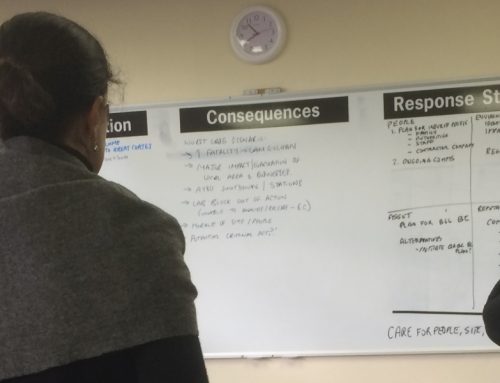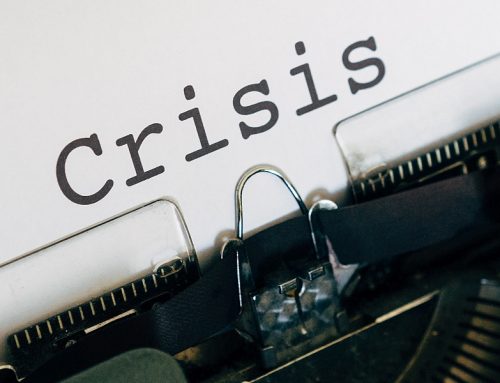There is an adage that crisis simulations are the second-best way to prepare (the best being a real crisis). However, we’d like to challenge this: too often we’ve seen leaders disengage because they have recently been through some kind of incident and feel the crisis ‘box’ has been ticked for that year. There are some problems with this: firstly, that the incident is often just operational and did not present strategic or existential challenges to the crisis team. Secondly, on closer examination, we find that the crisis team had not actually mobilised and that decision-making actually took place via a telephone call from the CEO’s office to the head of operations. Thirdly, we know that the specific issue is a current hot topic and will probably be thought of as the only crisis they need to consider… until another hot topic emerges… so they are likely to continue planning for the last crisis.
Crisis scenarios
Some of the fault lies with practitioners. Consultants can be guilty of planning for a limited range of scenarios; often too operational; often too predictable because they encourage emergency response-type thinking (if that happens, do this). No wonder intelligent strategic thinkers fail to engage with clunky exercises.
Let’s deal with crisis scenarios first: instead of merely exercising the current hot topic or choosing from the same old list of operational failures, we should encourage exercising across all seven families of crisis: criminal, personnel, physical, economic, information, natural disasters and reputation (as Ian Mitroff describes in https://hbr.org/2003/04/preparing-for-evil). This way, we can help companies be proactive rather than reactive. It also helps align simulations with an organisation’s existing risk management system, rather than creating a parallel process.
Perfect practice
There’s another adage we’d like to challenge: that practice makes perfect. Actually, as any athlete will confirm, perfect practice makes perfect. Taking the whole crisis team, step by step, with alternates and supporting functions, through the simulation, using a commonly agreed process, is what produces real crisis readiness. Speed and realism come later: crisis teams should not be running before they can walk.
As consultants, we need to create a space where all the team members can perform successfully. Sometimes this means neutralising some executive behaviour from the ‘dark side’! We need to acknowledge people’s tendency to default to unhelpful behaviours and overplay strengths when under pressure. Especially the CEO, who arguably should not even be in the room.
Challenging dilemmas
Perhaps what makes the biggest difference is elevating the discussion from the operational or tactical level, to true strategic issues. If we are doing our simulations right, strategic thinkers should be genuinely challenged by dilemmas; they should be solving wicked problems; issues where there is no clear answer. They should be examining the potential outcomes and their strategic options for dealing with the onset and impact of a crisis.
To achieve this, we need to remove the operational and tactical issues the crisis team is not dealing with. We need to get away from the fast-paced emergency response mentality and encourage the crisis team to process information and make decisions deliberately, in an appropriate time frame (which is often slower than people imagine). We find the best way to create space for this mode of thinking is by use of a process such as the Focus Board, which helps prevent the team from the usual tendency to jump instinctively straight from problem to solution.
So, we’d like to challenge the assumption that a real crisis is the best way to prepare. We’d also like to challenge the assumption that realism is a dominant factor in crisis simulations. We are often asked to deliver a realistic crisis scenario. We can do this (we use simulated news and social media, film clips and role players, and it’s great fun) but we question whether it is always the most productive form of simulation. We’d argue that perfect practice makes perfect: Walk before running.
What makes the difference?
Eddistone Consulting has drawn together a team of specialists who have extensive collective experience, coming from industry, the emergency response services, the multi-agency response community, health & safety and education backgrounds, to develop and deliver a competency-based training and exercise framework with identified performance deliverables to measure effectiveness and assure competence.
We use a proven systematic approach that explores how to respond. We have core methodologies for each response level of Emergency, Incident and Crisis (Operational, Tactical and Strategic) management. The credibility and reality of our exercises, experienced in a safe environment where real learning takes place, is always valued by our customers.
How we can help
We recognise that many of our clients, especially in the COMAH-regulated sector, are under pressure to maintain mandated emergency management capacity. We are committed to providing you with emergency management support wherever possible throughout this pandemic. This is important to ensure that you do not fall behind with your scheduling backlog and to maintain the required capacity, despite the impact of absence and illness on safety-critical roles. We have two strategies to help you achieve this:
1. We have developed remote methods for training and assessment, coupled with remote mentoring for the development of key roles. This facilitates accelerated learning and makes the best use of technology and advanced learning practices.
2. We have a pool of experts ready to provide direct support, both remotely and in person, to reinforce capacity and mentor your existing capability. Our team of experts is ready to stand alongside your key emergency response personnel.
Contact us to discuss how we can help you.





